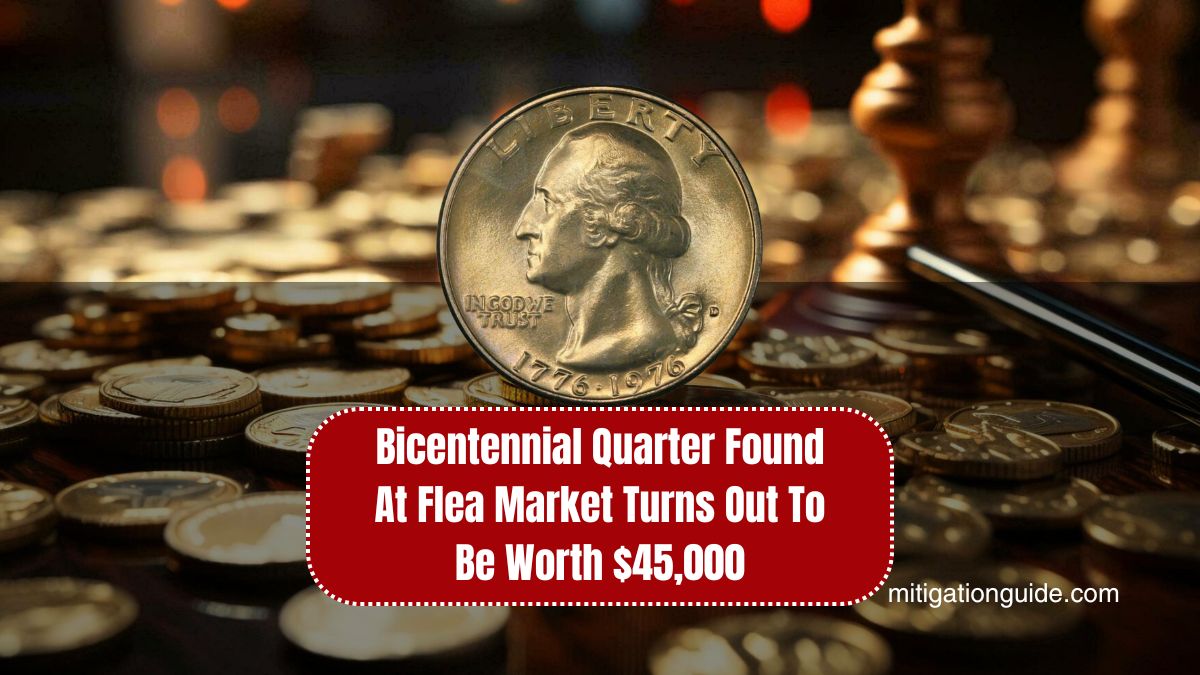A simple trip to a local flea market turned life-changing for one lucky individual who stumbled upon a rare Bicentennial Quarter now valued at a staggering $45,000. This unexpected discovery highlights the hidden treasures still circulating today — particularly in the world of rare coins.
Let’s dive deep into what makes this Bicentennial Quarter so valuable and why you should double-check the loose change lying around your home.
Background: What Is the Bicentennial Quarter?
The Bicentennial Quarter was issued in 1975 and 1976 to celebrate the 200th anniversary of the Declaration of Independence. Unlike typical quarters, these coins feature a special design:
- Obverse (Front): Traditional profile of George Washington.
- Reverse (Back): Depicts a colonial drummer boy with a victory torch encircled by 13 stars.
- Dual Date: Coins are marked 1776–1976.
Over 1.6 billion Bicentennial Quarters were minted, making them very common. However, a small number possess unique characteristics that make them extremely valuable today.
The $45,000 Quarter: Why It’s Special
The quarter discovered at the flea market wasn’t just any regular Bicentennial Quarter. Several key factors contributed to its incredible value:
- Minting Error: It displayed a double die obverse, where the designs and inscriptions appear doubled — a rare mint error.
- Proof-Like Finish: Although intended for circulation, this coin had a mirror-like surface, similar to proof coins.
- Perfect Condition: The coin was graded at Mint State 67+, indicating it was almost flawless.
- Low Mintage Variant: Believed to be an early strike from special dies, giving it both rarity and premium collectibility.
All these attributes together made this coin extremely rare — leading to the eye-popping valuation of $45,000.
Important Features That Add Value to Bicentennial Quarters
Several features can make a Bicentennial Quarter exceptionally valuable:
| Feature | Details | Impact on Value |
|---|---|---|
| Double Die Error | Doubling of inscriptions or images | High |
| Proof-Like Surface | Shiny, reflective finish usually for proofs | Very High |
| High Mint State Grade (MS 65+) | Minimal to no signs of wear | Increases Value |
| San Francisco Mint Mark (“S”) | Indicates proof coins, especially in silver | Valuable |
| Rare Metal Composition | 40% Silver varieties exist | More Valuable |
If your quarter checks off any of these boxes, you might be sitting on a valuable coin without even knowing it.
How to Check if Your Bicentennial Quarter Is Valuable
If you suspect you might have a rare Bicentennial Quarter, here’s what you should do:
- Inspect Closely: Look for minting errors like double dies or clipped planchets.
- Check the Mint Mark: An “S” mint mark suggests it’s a proof coin, and some are made of silver.
- Assess the Condition: Coins with minimal scratches, dents, or discoloration fetch higher prices.
- Get a Professional Grading: Certified coins graded MS 65 or higher often sell for thousands.
Many hidden gems go unnoticed simply because their owners aren’t aware of what to look for.
The story of a Bicentennial Quarter found at a flea market and later valued at $45,000 is an inspiring reminder that hidden treasures still exist.
While most Bicentennial Quarters are common, certain varieties with errors, proof finishes, and exceptional conditions can command serious money from collectors.
Next time you’re digging through old change jars, flea markets, or coin shops, pay close attention — you just might uncover a life-changing gem.
FAQs
How can I tell if my Bicentennial Quarter is silver?
Bicentennial Quarters made of 40% silver typically have an “S” mint mark and were included in special silver proof sets. Checking the coin’s edge — a uniform silver color without the typical copper stripe — can also indicate silver content.
What is the value of an average Bicentennial Quarter?
Most circulated Bicentennial Quarters are worth 25 cents. However, those in Mint State condition, with errors, or silver composition can range anywhere from $5 to over $1,000, depending on rarity.
Can Bicentennial Quarters with no errors still be valuable?
Yes, even without errors, uncirculated coins, proof coins, and silver composition versions can be valuable, especially if graded highly by professional grading companies.
